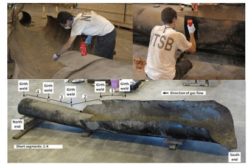Home » pipeline
Articles Tagged with ''pipeline''
Enbridge employees "behaved like Keystone Kops"
Read More
NTSB to meet on pipeline rupture and oil spill accident
Cleanup costs: $767 million and climbing
July 5, 2012
NTSB: Pacific Gas & Electric at fault in San Bruno blast
Regulatory agencies share the blame
August 31, 2011
Never miss the latest news and trends driving the safety industry
eNewsletter | Website | eMagazine
JOIN TODAYCopyright ©2024. All Rights Reserved BNP Media.
Design, CMS, Hosting & Web Development :: ePublishing





